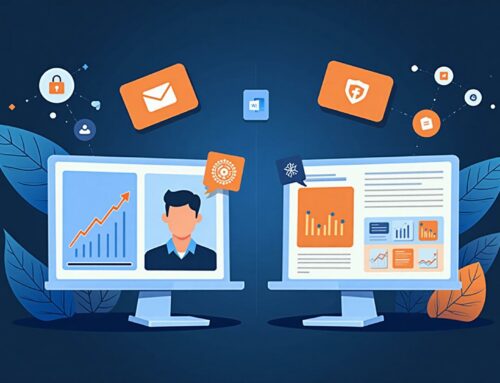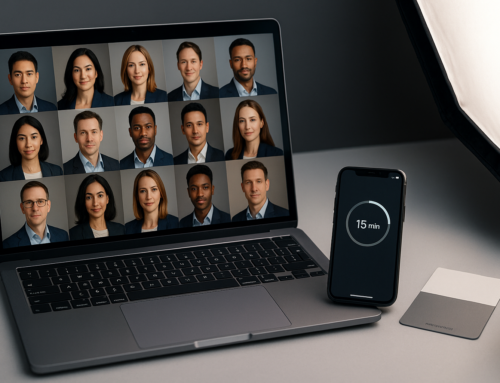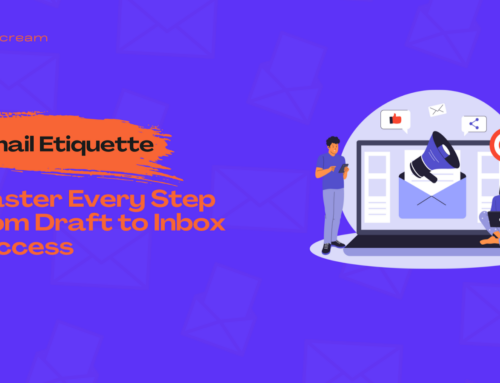Personalized marketing is officially an expectation. Customers want brands to understand their needs and send them relevant, timely content.
And that’s where AI can help. With AI, you can craft highly personalized email campaigns that resonate with each recipient. (Even if they’re a cold lead!)
Let’s take a closer look at how AI-powered email marketing tools can help enhance your campaigns, save time, and increase customer engagement. You’ll also discover actionable tips to make AI-driven email marketing even more effective.
Using AI to Craft Personalized Email Campaigns
What does it mean to use AI to craft personalized email campaigns with dynamic content?
Why use AI in your email marketing efforts?
More tips to create successful email marketing campaigns
- Focus on deliverability
- Be mindful when managing user data
- Target the right email recipients
- Optimize subject lines for higher open rates
- Segment your audience for tailored messaging
- Automate follow-up emails
What does it mean to use AI to craft personalized email campaigns?
The right AI tools can help you create tailored email content that speaks directly to individual preferences, behaviors, and needs.
Here’s how it works:
Instead of sending generic emails, AI analyzes customer data — like past interactions, browsing behavior, or purchase history. It can then generate and send messages that are highly relevant to each person. For example, AI might recommend specific products or services based on what a customer has previously bought or viewed. It can also determine the best time to send an email to each recipient. This is based on when they’re most likely to engage.
For instance, say you run a website hosting provider company. With AI-powered email campaigns, recipients will receive targeted offers. (Like discounted server upgrades for customers whose websites are growing. Or proactive renewal reminders for long-term clients.) They’ll also receive them at specific times, so they’re more likely to open them and click through.
AI tools can also help you send personalized emails to cold leads for your outreach campaigns.
For instance, Writecream can pull information from your prospects’ website URLs or LinkedIn profiles. It then uses that data to create tailored ice breakers and blog expanders you can use in your email copy. This captivating email messaging helps your recipients feel seen. (And it’s perfect for B2B email outreach.)
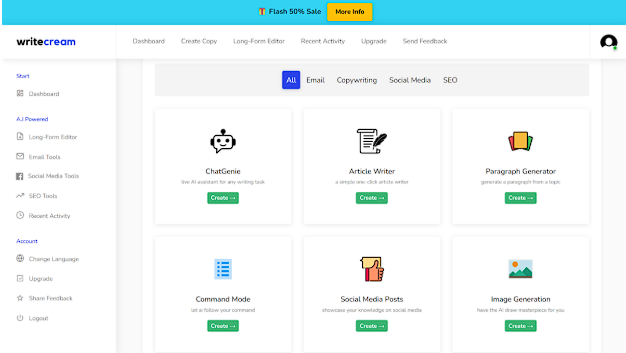
Why use AI in your email marketing efforts?
Customers don’t mind receiving offers. What they don’t appreciate are irrelevant, untimely messages.
That’s why your emails need to focus on the recipient. (And not just adding their name in the subject line. But truly knowing them.) AI tools consider user behavior and preferences — and can even understand pain points and end goals by customer segment. This helps predict the most relevant content to create and send.
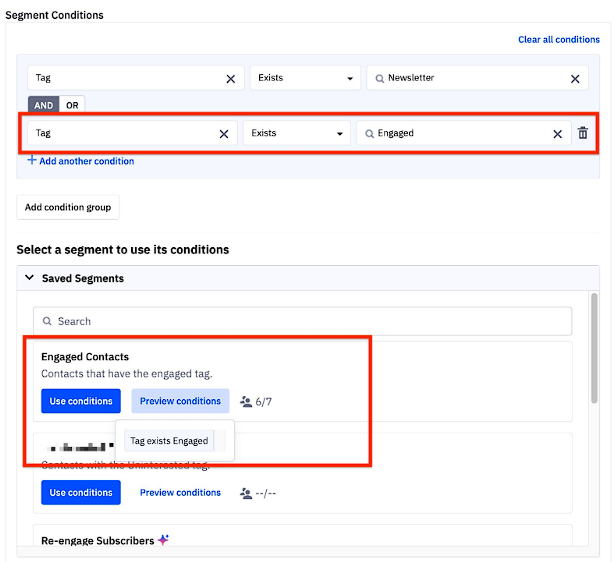
Here are some AI-based digital marketing tools you can try to help personalize your email campaigns:
- AI-driven email marketing platforms. These analyze your email list and segment your audience based on behaviors like purchasing habits and interactions. They can also A/B test emails to a sample group — and then auto-send the better-performing ones.
- Predictive analytics tools. These tools predict when a subscriber is most likely to engage with your email so you can send emails at the perfect time.
- Email copywriting tools. These use AI to Create email content that’s personalized using personalization tags for better engagement and optimized for conversions through dynamic content.
With AI, you can tailor your emails in ways you may have never thought possible. Consider signing up for some free trials so you can test these out and uncover which ones best suit your specific business needs.
More tips to create successful email marketing campaigns
To create successful email marketing campaigns, focus on using personalized approaches that resonate with your audience. Adding a name to the email and employing basic email personalization, like tailoring content to the recipient’s preferences, can make a significant impact. Sending a personalized email is a proven way to boost engagement, and using email marketing software with email templates simplifies the process. Email campaigns are a proven method for connecting with customers, especially when paired with email marketing tools like Campaign Monitor. It’s important to marketing success to take email personalization to the next level by adopting a highly personalized strategy. Moving toward marketing automation and sharing an email that might appeal to specific customer segments, such as an email from David’s Tea, demonstrates effective email personalization strategies. An owner would receive an email tailored to their preferences, thanks to email marketing tools, allowing email to set the stage for deeper engagement.
Now that we’ve covered why AI is so effective in email marketing let’s review some additional tips you can implement to make your email campaigns even more successful.
1. Focus on deliverability
When crafting AI-powered personalized email campaigns, it’s easy to overlook the technical essentials — like making sure your messages land in inboxes. Consider using a Dmarc Report Analyzer for support. These decode your email service provider’s data and highlight authentication issues or delivery concerns.
Think of it as a translator that flags potential red flags to protect your domain’s reputation.
When you combine DMARC analysis with AI-driven personalization, you can enhance deliverability, fine-tune your strategy, and make meaningful connections with your audience.
Other email deliverability best practices include:
- Ask recipients to move your email address to their primary tab if they use Gmail
- Regularly clean your email list to remove inactive or invalid email addresses
- Segment your email list to target more specific groups with tailored content
- Avoid spam trigger words like “free,” “guaranteed,” and “limited time”
- Keep email design simple to avoid slow server speeds
- Use a consistent sender name and email address to maintain a personalized message.
2. Be mindful when managing user data
To build trust with your audience and protect assets from litigation, be careful about how you collect, store, and use data. Even small mistakes can lead to GDPR or CCPA violations and potential lawsuits.
To avoid these risks, take proactive steps like:
- Implementing robust consent management systems — so users explicitly agree to how you can use their data
- Auditing your AI systems regularly to make sure they comply with data protection rules
- Training your team to understand and follow data privacy regulations
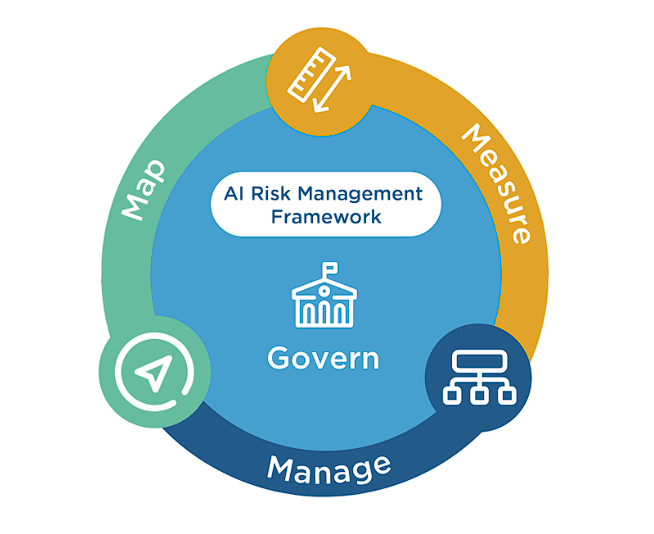
It’s also important to implement an AI risk management framework to identify vulnerabilities before they turn into actual threats. For instance, you might regularly test AI algorithms to detect biases or errors in data processing. And monitor AI models for signs of unauthorized access or data breaches.
3. Target the right email recipients
Sending a cold email to someone who’s not a good fit for your business wastes your precious time. Instead, focus on targeting the right recipients who are most likely to receive an email from your brand.
AI lead scoring tools and guided selling methods — like product discovery quizzes — can help you identify qualified leads.
They highlight:
- Prospects who’ve shown interest in similar products or services may appreciate a personalized message tailored to their preferences.
- Leads with characteristics that align with your buyer personas
- Quiz takers whose responses indicate a need for your offers
- Potential customers that are more likely to need your offers
These tools take the guesswork out of targeting so you can send personalized offers to those who are most likely to engage.
4. Optimize subject lines for higher open rates
Your email subject line is the first impression your recipient gets. So it needs to grab attention. AI can help you test different subject lines to see which ones resonate best with your audience,
Some more subject-line best practices include:
- Personalize subject lines with the recipient’s first name or other relevant details to enhance email personalization.
- Avoid all-caps and excessive punctuation
- Create a sense of urgency or curiosity
- Keep them short and clear
- Use emojis
5. Segment your audience for tailored messaging
Instead of sending the same email to everyone, AI can help segment your audience based on demographics, purchase behavior, or engagement level. This way each group gets personalized content that aligns with their interests and needs.
For example:
- New subscribers might get a welcome series and a coupon for their first purchase
- Repeat customers could receive loyalty offers and VIP invites to exclusive events
- Inactive users might receive an email with re-engagement emails and a discount code for a personalized experience.
Segmentation can increase the chances that recipients will open and act on your emails.
6. Automate follow-up emails
The hardest parts of email marketing? – Knowing when to follow up with a recipient.
With AI, you can automate follow-up emails based on a recipient’s actions. For example, if a recipient opens your email but doesn’t click through or make a purchase, AI can trigger a follow-up email with a tailored message or personalized experience to re-engage them.
This helps keep your prospects warm without manual intervention and can boost the chances of conversion.
AI-powered tools may also offer sentiment analysis for email marketing personalization. These analyze the sentiment behind customer interactions with your emails — and give you valuable insights into how they feel about your brand and content.

Sentiment analysis tools can measure whether recipients are positive, neutral, or negative about your messages. Use these insights to fine-tune your approach and tone.
Benefits of Email Personalization
Email personalization is a game-changer for marketers aiming to elevate their email marketing strategy. Personalized email campaigns are proven to be 5x more effective, as they connect with recipients on a deeper level by using their first name in the subject or including personalized images. A guide to personalized email practices suggests using dynamic content and email automation to craft timely email messages tailored to individual preferences. By employing marketing automation tools like campaign monitor, marketing teams can develop email templates, customize content within your email, and send types of email such as a welcome email or confirmation email. Examples of personalized email campaigns show that using basic personalization, like adding the recipient’s name to the subject line, or advanced personalization tactics, can take your email marketing to the next level. Stored in your email list, data such as first names allow you to use email effectively while personalization strategies ensure every email can make a lasting impact. A well-executed email marketing strategy that uses marketing automation solutions and email service providers enhances engagement, turning marketing emails into one of the best ways to open an email and drive conversions.
- Personalized Email Campaigns: Personalized email marketing generates 5x better results compared to generic emails.
- Use Dynamic Content: This enhances the content of your email by aligning with recipient preferences.
- Emails with Personalized Subject Lines: Adding the recipient’s name to the subject line boosts open rates.
- Email Automation: Automates timely email delivery, such as sending a reminder email or welcome email.
- Marketing Automation: Solutions like campaign monitor simplify email newsletter-type marketing.
- Basic Personalization: Includes steps like using the recipient’s first name and personalization strategies.
- Email Templates and Builders: Tools like drag-and-drop email builders help create effective email designs.
- Examples of Personalized Emails: Confirmation emails or marketing emails personalized for an event.
- Email Subscribe Forms: Capture customer data for future personalization stored in your email list.
- Personalization Can Help: Improve engagement and take email marketing to the next level.
This approach ensures your email campaigns are optimized with personalization to drive better results and enhance customer relationships.
Wrap up
AI is transforming email marketing by helping businesses send highly personalized, relevant emails that drive better results. With AI, you can save time, increase engagement, and improve customer satisfaction.
Writecream’s AI copywriting tool simplifies the process of crafting cold emails. Use it to pull data from a website URL or LinkedIn profile to generate personalized icebreakers for your cold emails.
So, what are you waiting for? Try AI-powered tools like Writecream to make your email marketing more effective.
FAQs
Q: How do I integrate AI into personalized email marketing?
A: Integrating AI into your email marketing is easy with the right tools. Start by using AI-driven platforms that analyze customer data and segment your audience. Then, apply AI-powered copywriting tools to create personalized content and send emails at optimal times.
Q: Is AI personalization worth it for cold emails?
A: Yes, AI personalization techniques are highly effective for cold emails.
AI helps you craft emails tailored to the recipient’s preferences, so you have better chances of engagement and conversion.
Q: How do I use generative AI to boost your email marketing campaigns?
A: Generative AI can create personalized email content at scale. It helps you craft entire emails based on customer data so each message resonates with the recipient.
Q: What AI tools can I use to craft personalized email campaigns?
A: Some top AI tools for email marketing include Writecream, Mailchimp, and HubSpot, which enhance email marketing personalization.
Q: Can AI help improve email segmentation?
A: Yes, AI can analyze customer behaviors, preferences, purchase history, and engagement data to create precise segments for a more personalized experience. With tools like Mailchimp, ActiveCampaign, or Klaviyo, you can automatically segment your audience.
Q: What AI tools can improve email copywriting?
A: AI-powered copywriting tools like Writecream help generate high-quality, personalized email copy. Use them to write engaging content that resonates with recipients. Hint: It’s great for cold emails!
Q: How does AI help optimize email sending times?
A: AI tools analyze past customer behaviors — like when recipients last opened your emails. Based on this data, it can recommend the best times to send emails.
Q: Can AI help with email testing and optimization?
A: Yes. AI can automatically conduct A/B tests on various elements of your emails (subject lines, content, CTAs, etc.).
Q: Is AI personalization only for large-scale email marketing?
A: No. AI personalization is beneficial for both small and large-scale email campaigns. Even solopreneurs can use AI tools to personalize emails based on user data.
